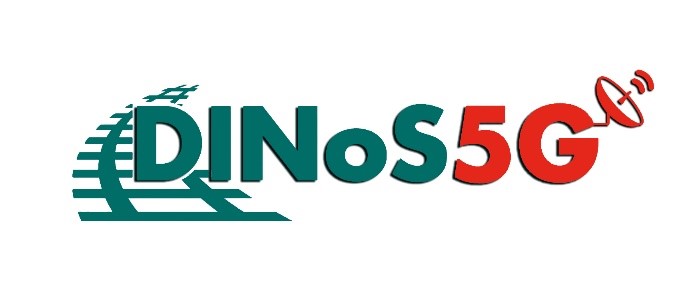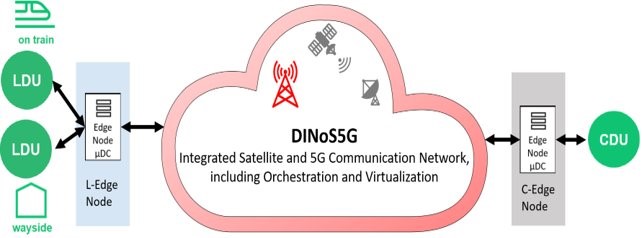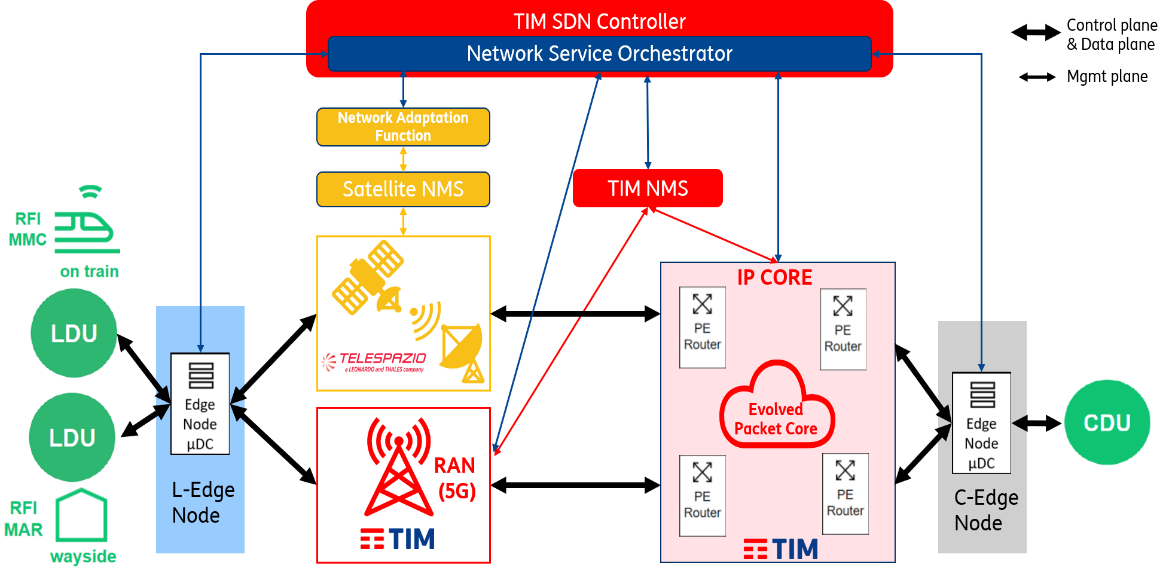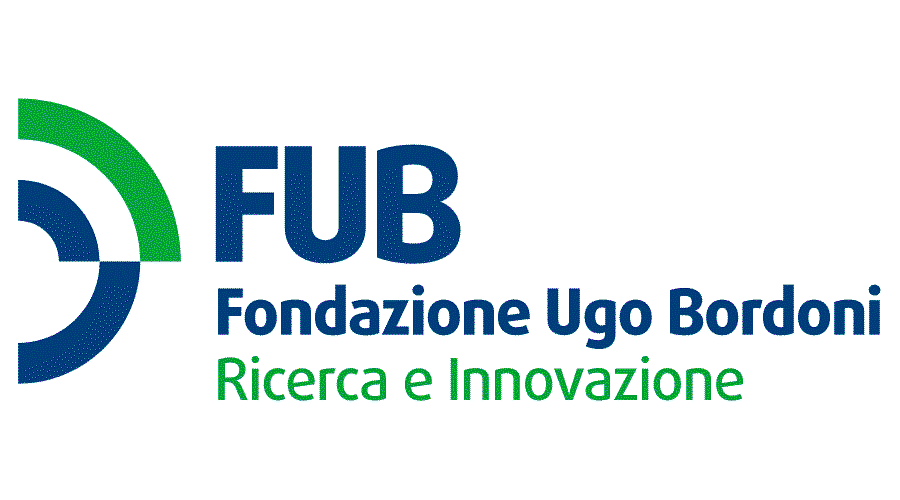
-
StatusCompleted
-
Status date2023-09-25
-
Activity Code3A.125
The project has created an integrated communication infrastructure to serve the needs of a distributed application devoted to large-scale and fine-grade diagnostics of civil assets, tracks and equipment constituting the national railway environment of a major country like Italy, for the purpose of smart predictive maintenance.
Macro-objectives of the Project are the following:
-
Characterize the properties of the distributed diagnostic application, its main entities in terms of sensors, data gathering nodes (LDU, local data units) and central data processing nodes (CDU, central data units). Derive requirements and KPIs for a communication infrastructure enabled to serve the application.
-
Model, specify, implement and test the communication infrastructure as a 5G network slice, encompassing both terrestrial and satellite access, for LDUs and CDUs. Reliability, resilience, physical/mechanical safety and cyber security are stringent and unavoidable requirements of the above-depicted communication infrastructure.
-
Enhance the latest 3GPP-compliant solutions with novel ad-hoc extensions to deal with orchestration and virtualization of both terrestrial and satellite resources, so as to offer to the diagnostic application a unified, integrated view of communication facilities, that can be invoked in a technology-transparent way, just specifying performance parameters when requesting transfer of diagnostic data between LDUs and CDUs.

The Project trialled a system consisting in the integration of 5G terrestrial access, Satellite access and core 5G resources, under the umbrella of an orchestrator operational in a commercial 5G network. Integration is pursued by interfacing such orchestrator with satellite-specific management and control components, by suitable interventions on abstraction and virtualization.
The challenge has been to prove that the system is ready to be engineered and scaled up to meet the long-term operational needs of a national railway maintenance and diagnostics application and become the basis for a product business plan
The DINoS5G product offers several enhancements with respect to solutions previously applied to the railway infrastructure predictive maintenance market. It is an extremely flexible communication platform relying on a hybrid satellite and 5G terrestrial network, allowing distinct and separate connections of the two types depending on application requirements. This enables predictive maintenance applications to be fed with a far greater amount of data than traditional products, whenever needed and via the best possible delivery path. This results in superior applicative effectiveness by reducing periodic maintenance interventions on-field in favor of proactive, focused ones, which in turn leads to cost reduction and increased customer experience through lower outage time and travel delays. DINoS5G can even reach further evolutive steps by implementing the 5G native network slicing concept that allows deployment of application-tailored networks. Besides, having developed the network service orchestration extension towards the satellite network system, DINoS5G paves the way to the replicability of solutions relying on hybrid satellite-5G terrestrial networks in other segments or markets in the worldwide environment.
DINoS5G communication platform comprises a set of network elements with different levels of development. Some network elements are partially upgraded, others are reused without customizations, while two product-specific components, namely Edge Node and Adaptation Function, are developed from scratch. 5G Radio Access and Core Network offer traffic delivery over Terrestrial Network, while Satellite Access is handled by a devoted Network Management System and the Terrestrial IP Core domain. The integrated management of both networks is in charge of the Network Service Orchestrator, that uses standardized southbound APIs to handle Terrestrial Network and manages the Satellite one by means of the services offered by the Adaptation Function. This brand-new component is in charge of bridging the gap, in semantics and abstraction level, between what is made available at the northbound interface of the Satellite NMS and what is expected at the southbound interface of the DINoS5G Orchestrator. The other DINoS5G specific element is the Edge Node, that is responsible for providing application oriented QoS and traffic steering functions under the control of the Orchestrator. To this purpose, a management interface tailored to the DINoS5G Orchestrator has been developed.
The DINOS5G system architecture is based on the integration in a seamless manner of 5G communications and satellite communications. Depending on whether the Application Nodes (LDUs, CDUs) are located and/or on requirements on data they have to transmit, they can use 5G access or satellite access. The challenge of DINoS5G is that access technology be hidden from the LDUs and from the CDUs by means of Edge Nodes (EN), of type L-EN (LDU-EN) or C-EN (CDU-EN) respectively, that take care of selecting the best suitable network access resources to satisfy runtime application requirements.
Key aspects of the Architecture are:
-
A unified communication platform for the Application Nodes.
-
Seamless integration of 5G RAN and Satellite RAN, with Application Nodes being unaware of the specific technology.
-
The concept of Edge-node and its internal architecture, as the means to implement network abstraction from the viewpoint of the Application Nodes.
-
Integration of satellite communication functionality within the Orchestration and Virtualisation framework of 5G, by means of an Adaptation Function.

MS1: completion of requirement definition and architecture specification
MS2: overall system integration: technological solution for 5G and satellite access interfaces with wayside sensor network and on-board diagnostic equipment.
MS3: trial set-up and execution.
MS4: trial validation, business model construction and business plan delivery.
Integration of network resources from satellite and terrestrial infrastructures has been achieved, in a way that envisioned hybrid communication paradigm can complement 5G terrestrial access with satellite one to guarantee high End-to-End performance, such as availability, quality and continuity as well.
The integration has been achieved at the transport level thanks to a novel introduced element which is the Edge Node, being able to configure and use both access networks to properly address application-level traffic requirements. Intelligent hybrid 5G/Sat resource management has been implemented.
The Edge Node operates as a junction point between three domains, namely the application layer, represented by the LDUs and CDU, the access networks’ data planes and the End-to-End networks’ control planes, in the role of hybrid Terrestrial/Satellite NSO. Such position allows this former to optimize the traffic steering procedures to manage application data traffic as well as configuring both networks accordingly.
The DINoS5G communication platform has shown its potential to operate in heterogeneous scenarios with different terminal devices. The process of network re-configuration is managed close to the terminal nodes, so it is possible to install Edge Nodes very close to LDUs (even in a bundled solution) and let them operate in a way which is completely transparent to the data collection logic.
DINoS5G benefits are in terms of achieved application-level performance, as well as an increment of the flexibility of the target diagnostic platform, allowing dynamically management and prioritization of exchanged data flows.
DINoS5G platform, being decoupled from the data plane, can be adapted to use cases such as smart cities, smart grids management, autonomous driving.









